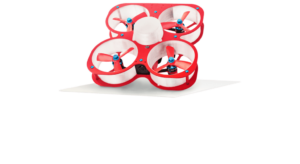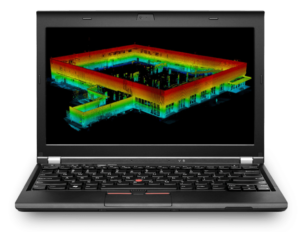
Indoor Inspection Drone by FIXAR
Indoor drones have been specially designed to operate in environments such as warehouses, mines, industrial plants and abandoned buildings. They are commonly used for inspection, and can enter areas that may be inaccessible to humans or hazardous due to factors such as radiation, chemicals or risk of collapse or falling debris. Indoor drones are also used for tasks such as stock checking in large warehouses or fault-finding on aircraft in hangars.
Propeller Guards & Full Cages
Due to the high degree of manoeuvrability required, caged drones are typically multirotor platforms. In order to reduce the risk of injury to people and damage to themselves and their surroundings, they will be fitted with either propeller guards or full cages that surround the drone. They will also typically feature a rugged construction with enhanced collision and fall resistance, and will usually be rated for ingress protection against water and dust.
Confined Space Drone Payloads
Caged drones can be equipped with a range of sensors for specific inspection tasks. These may include high-definition still image and video cameras, thermal cameras, gas and chemical sensors, and other NDT (non-destructive testing) sensors. They may also carry extra lights to help illuminate their surroundings.
Caged Drone Navigation

FIXAR LiDAR Obstacle Detection System
Confined space drones will often have to operate in GNSS-denied environments, and so must rely on other technologies to navigate within their surroundings. These may include high-accuracy inertial navigation systems (INS) as well as LiDAR scanners, time-of-flight sensors and visual cameras. These technologies can also help the drone perform reliable obstacle detection and collision avoidance.
In order to receive control signals and transmit data back to operators, indoor drones must be equipped with wireless communications that are capable of NLOS (non-line-of-sight) transmission and can pass through walls and other obstacles.



















